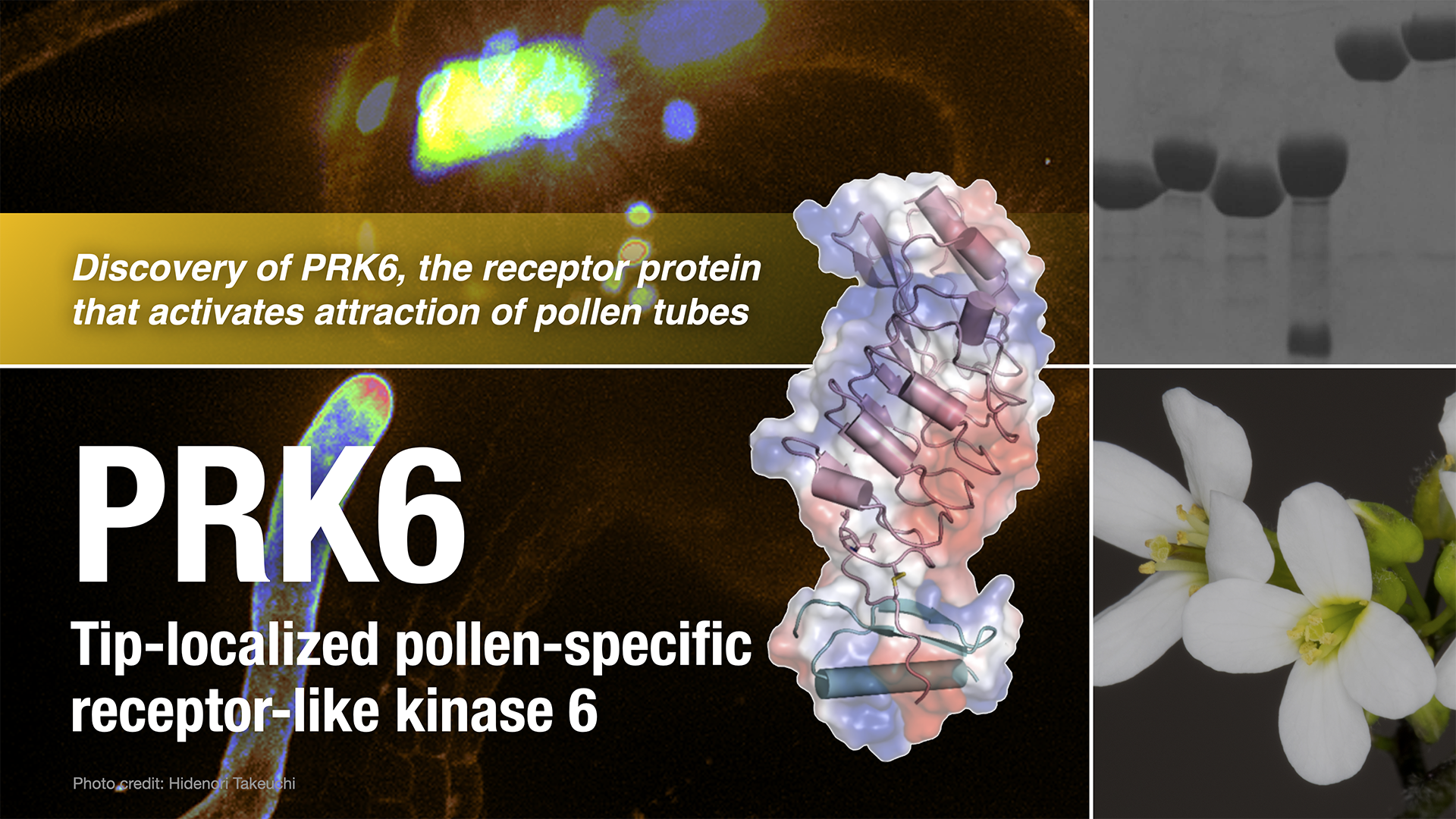
Search for a receptor
In plant reproduction, the pollen tubes extend straight down the pistil from its tip until they near the ovule, before changing the direction of their growth towards the ovule until they make contact with and fertilize it. The ovule (female) part of the plant releases LURE, a pollen tube attractant, to guide the pollen tube towards it. However, without a receptor on the pollen (male) side, the pollen tube will not react, and will simply grow past the ovule without fertilizing it.
Using Arabidopsis thaliana, ITbM’s researchers found the receptor, PRK6, which senses LURE. They discovered that the receptor contains several similar amino acid sequences, which work together to correctly interpret the attractor signal and control the growth and orientation of the pollen tube.
Two molecules, one big step for plant reproduction research
The researchers used X-ray crystallography to show how LURE and PRK6 form a ‘lock and key’-like bond. The two molecules’ structures vary between plants, meaning that only the right key molecule can fit the right lock molecule and thus ensuring that the correct type of pollen fertilizes the ovule. Through understanding the structure of the binding region, it is expected that progress can be made in creating viable plant hybrids whose breeding has been challenging. The discovery of LURE and PRK6 represents a significant step forward on the road to understanding the processes behind plant reproduction.
Reference
- "Structural basis for receptor recognition of pollen tube attraction peptides" by Xiaoxiao Zhang, Weijia Liu, Takuya T. Nagae, Hidenori Takeuchi, Heqiao Zhang, Zhifu Han, Tetsuya Higashiyama, and Jijie Chai, Nature Communications 2017, 8, 1331. DOI: 10.1038/s41467-017-01323-8